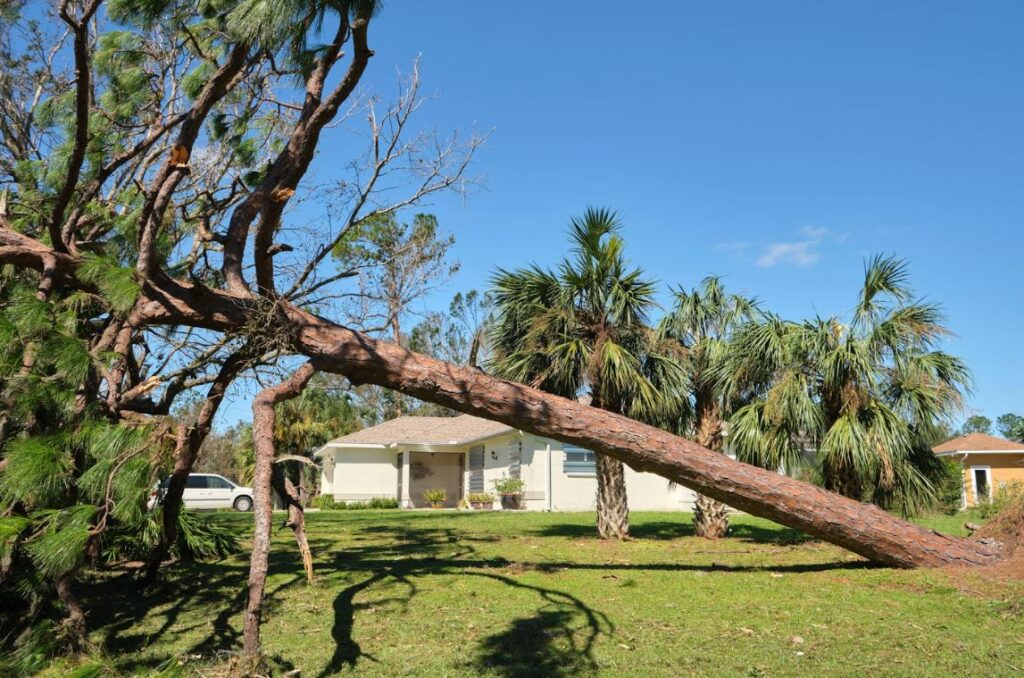Are you a homeowner with trees on your property?
Are you planning to buy a house that comes with majestic trees?
Trees can bring beauty, shade, and a sense of tranquility to any yard. However, there are times when a tree may need to be removed due to safety concerns or signs of declining health.
This post explains seven signs that suggest tree removal is necessary, but don’t worry! This list also offers practical suggestions to make the process easier. Read on.
1. Multiple Dead Branches
Imagine sitting under your favorite tree, enjoying a summer breeze, when a dead branch falls next to you. Not a pleasant experience, right? Dead branches aren’t only an eyesore but also pose a severe safety risk.
Tree removal experts, like Al Miley, advise paying close attention to trees with multiple dead branches. These branches can indicate underlying health issues, such as disease or decay. If you notice a significant number of dead branches, consider removing the tree before accidents occur.

2. Leaning Tree
Have you ever seen a tree that looks like it’s doing its best Pisa Tower impression? A leaning tree may sound quirky, but it’s a sign that something isn’t quite right.
Some trees naturally lean due to environmental factors, but a noticeable lean may indicate root damage. In such cases, the tree might be at risk of toppling over, posing a potential threat to your property and loved ones.
3. Damaged Roots
Like a house’s foundation, a tree’s stability and health rely on strong roots. So, what happens when a tree’s roots get damaged? Defective roots are prone to instability, making them more likely to fall in storms or even on calm days.
When inspecting your tree, look for exposed roots, soil erosion around the base, or mushrooms. If you spot any of these red flags, it’s time to consider tree removal to avoid potential accidents.
4. Fungal Growth
Fungi might be a hit in culinary circles, but it’s an entirely different story when it comes to trees. If you notice any unusual fungal growth on your tree, it could indicate an underlying issue. Fungal growth often occurs when a tree struggles with decay or disease, compromising its health.
Look out for mushrooms or other fungi growing on the trunk, branches, or even around the roots. Fungal growth with wilting leaves or sparse foliage shows that tree removal is necessary to prevent disease and hazards.
5. Cracks Or Splits In The Trunk
Like a splitting headache, a tree with cracks or splits in its trunk is nothing to ignore. The trunk openings can weaken the tree and make it less able to withstand strong winds and heavy branches.
As a responsible homeowner, you should regularly check your trees for damage. Consult a tree removal professional if you notice deep or widening cracks and splits. Timely resolution of these issues can prevent property damage and ensure safety.
6. A Tree Close To Your Roof
A tree near your roof may be charming but can cause sleepless nights during stormy weather. Tree removal experts advise homeowners to consider roof-tree proximity. Falling branches during a storm can damage your roof, windows, or even vehicles.
To avoid such issues, assessing the distance between your tree and your roof is ideal. If branches are getting too close to your shingles, it may be time to cut down the tree to protect your property.
7. Pest Infestation
Pests are every tree’s worst nightmare. When parasites and insects attack a tree, they can weaken its structure and health. Pests can spread lime disease, histoplasmosis, and oak wilt.
If you notice trunk holes, sawdust, or unusual insect activity, address it promptly. Contact an arborist or other pest-busting professionals who can assess the infestation and recommend the best solution.
Tips For A Successful Tree Removal Process
After adding those signs in your checklist, the points below will discuss some tree removal tips:
- Outsource Tree Removal Experts: When it comes to tree removal, calling in the pros is the way to go! Expert tree removers have the skills, equipment, and knowledge to remove trees safely and efficiently. Don’t risk harming yourself, your property, or the tree by attempting a DIY approach. Leave it to the experts to ensure the job is done right the first time.
- Obtain Necessary Permits and check local regulations before starting any tree removal project. Some areas have specific tree removal restrictions to protect the environment and trees. Ignoring these regulations can lead to hefty fines and legal problems. So, do your research and fill out any paperwork before removing trees.
- Protect Nearby Structures: Tree removal can be complex, especially involving large or mature trees. To protect nearby fences, buildings, and utilities, take precautions. A skilled tree removal team will use ropes, chainsaws, and ladders to safely lower the tree and avoid damage.
- Dispose Of The Tree Properly after safe removal. Wood can be recycled, chipped for mulch, or removed as green waste. Not only does proper disposal promote sustainability, but it also prevents the spread of pests and diseases.
These tips will help ensure a successful tree removal process and reduce potential dangers or damages.
Making The Right Call For Tree Removal
Well done for prioritizing the safety of your property and family! By following the checklist and tips in this article, you can make informed decisions and effectively remove trees.
Remember, safety is always the top priority for tree removal. If you notice any signs, consult professionals immediately. Kudos for caring for your trees and protecting your family and residential space!

